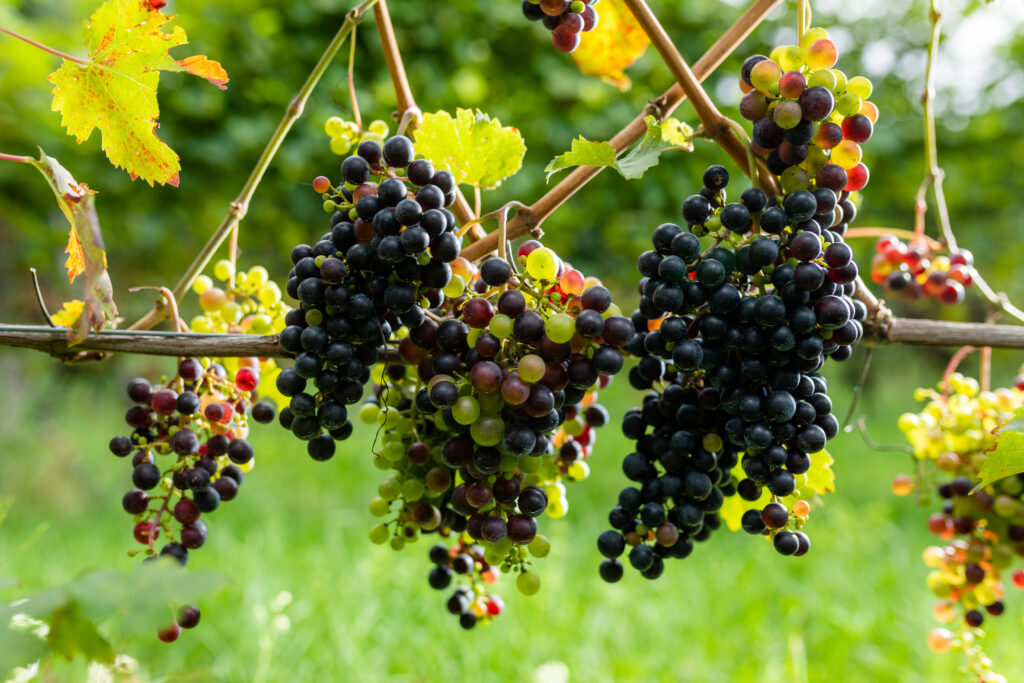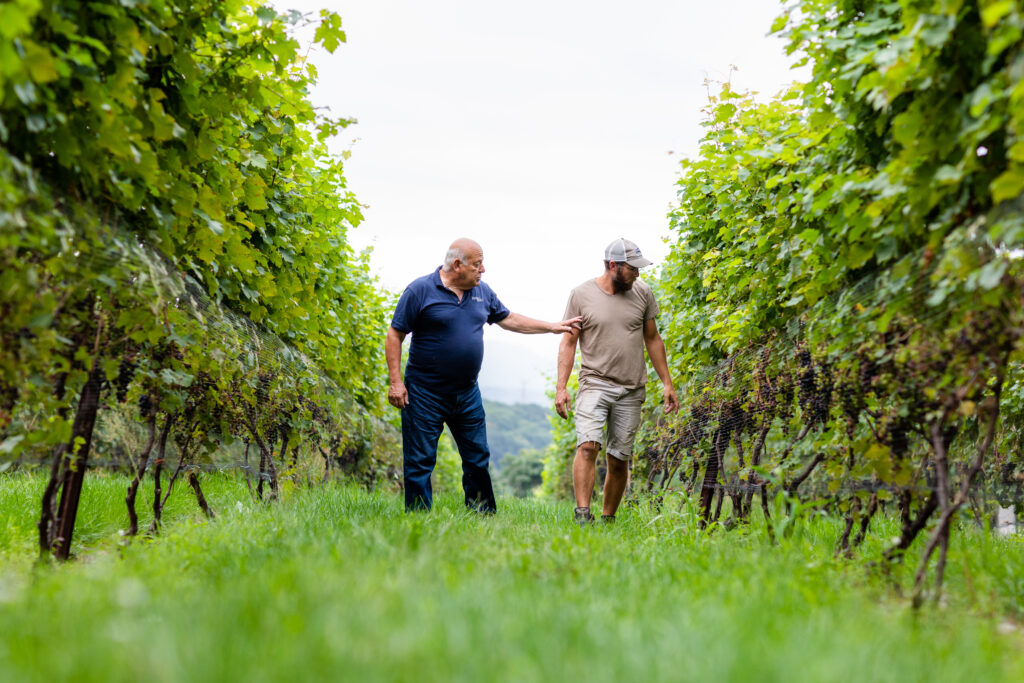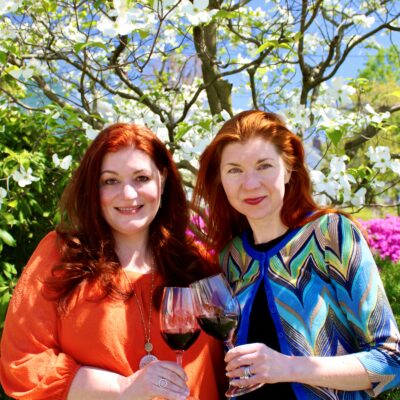Sustainability is not a one-size-fits-all concept in most industries. In the wine world, a cookie-cutter checklist of musts for a winery or vineyard to be considered sustainable simply doesn’t work. Our wineries in New York have different sustainability challenges than wineries in California. Even within New York vineyards may have different sustainability challenges depending on the growing region. There are a lot of variables.
Matthew Spaccarelli—who won the 2023 John H. Brahm III Grower Award for Dedication and Contributions to the New York Grape Industry in that year’s Unity Awards—thinks a lot about those variables whether they’re those of the vineyards he manages, of others in New York, or across the world.
Along with his partner Casey Erdmann, he opened Fjord Vineyards in Milton in 2013. He brought the experience he amassed working at his family’s winery, Marlboro’s Benmarl Winery, with him when the couple founded Fjord. After 20 years of experience in the vineyard (and the cellar), he’s learned a thing or two about sustainability and vineyard management, and top of what he’s learned is to be flexible.
Matthew generously shared some of that knowledge with us recently, after doing the same for the entire New York wine community. After participating in the initiative that led to the ground-breaking New York Sustainable Wine Growing certification by serving on one of the sustainability committees, he helped create the certification program that Fjord is now a part of. The winery is also a member of the Hudson Valley Cabernet Franc Coalition. One benefit of participation in these programs is that members frequently share knowledge about sustainable growing practices.

Always Evaluating. Always Editing. Always Adding
“The sustainability program was a little eye-opening. We were already doing a bunch of the standards,” says Matthew.
Fjord had a great foundation, but the sustainability program helped him—and other wineries that participated—realize what could be added.
That’s also how the Sustainable Wine Growing certification program evolved. Many New York wineries were already working with the self-auditing VineBalance workbook and the committee took the best practices from that program as a foundation.
“The [committee] folks said ‘Okay. Let’s use this. Let’s go through it piece by piece, and then we’re going to edit it,” says Matthew.
But that editing isn’t a one-time process. Because sustainability challenges come and go with the changing climate, there will always be new challenges and new paths toward sustainability.
“You need to be adaptable,” he says, referring to what the best vineyard practices are. He uses best water practices as an example.
“Having enough water is a big issue in sustainability at large, but not really here in the Northeast,” says Matthew. “We have plenty of it for decades to come.”
Does that mean the New York wine industry does not need to focus on water issues? No. But, rather than focusing on using as little water as possible as some regions out West may need to do, New York needs to focus on water runoff into lakes, rivers, and the Atlantic Ocean to ensure that water that runs off from vineyards does the least amount of harm. And, of course, wineries in hilly Hudson Valley have different runoff issues than those in mostly flat Long Island. What’s necessary for sustainable water management in one of New York’s wine regions may not be necessary in another.
“We need to make conscious decisions on a day-to-day, week-by-week, or season-by-season basis,” he believes. And, those conscious decisions may sometimes be different from one New York AVA to another.

Sustainability Reaches Beyond Vineyard Practices
Often sustainability is thought of as simply being synonymous with environmentally friendly, but it’s more than that.
Economic sustainability sometimes requires taking certain actions that may not be the most environmentally sustainable, even though Spacarelli says he knows that’s not something some people want to hear.
“Sustainability is very far-reaching,” he believes.
“Having a certification like USDA Organic doesn’t mean your community is healthy. It doesn’t mean that your employees have sustainable wages. That certification is just about what materials you’re putting on your plants,” he says.
That’s why Matthew appreciates the direction the New York Sustainable Wine Growing certification takes growers. Growers can still obtain certification if they sometimes have to use chemicals that aren’t in the USDA organic program in order to be economically sustainable.
“I often get asked the question, ‘Are you organic or do you use chemicals,’” he says. “My first response is always, ‘Sometimes we use organic chemicals and sometimes we use commercial conventional chemicals. Let’s sit down and talk.’”

Keeping an Open Mind
An open mind is important when choosing what’s truly sustainable—environmentally and economically—for each vineyard and each region. It’s also important to recognize that there is now a base of consumers that are very open-minded when it comes to wine. Some of them are younger, but not all of them.
That open-mindedness, along with advancements in growing practices, allows for wineries to embrace grapes they may not have embraced before—grapes bred for the specific conditions of a region. That means hybrids, and consumers are much more open to wines made from them than in the past because the grapes tend to need less intervention in the vineyards and that points to sustainability. Some grapes bred to resist powdery mildew or tolerate drought can—after decades of work with them—now make wines that these open-minded consumers embrace.
Pointing to grapes such as Seyval Blanc and Traminette as examples, Matthew says, “There’s definitely gonna be a market for them and I think that sustainability is going to drive that.”
For winegrowers who want to keep on top of these one-size-does-not-fit-all sustainable practices, in addition to working toward the state’s sustainable certification, Matthew recommends getting involved with other growers through organizations or by directly reaching out to others in the community. That’s what he did.
“I’ve been doing this for 20 years and for the first 10 years, I was making a lot of phone calls. Now I get a lot of phone calls,” he says.

